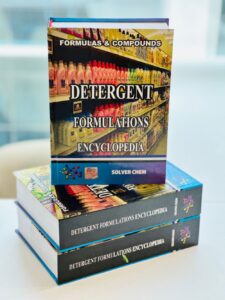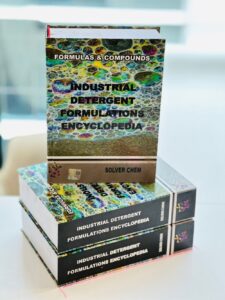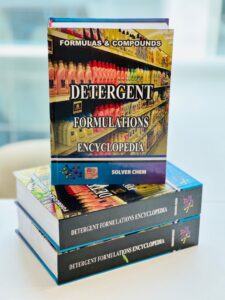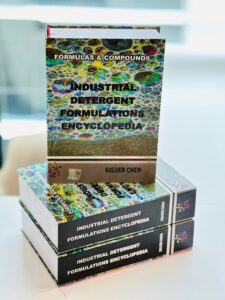
 🧼 Automatic Washing Machine Powder Detergent Manufacturing – Production, Formulation and Properties
🧼 Automatic Washing Machine Powder Detergent Manufacturing – Production, Formulation and Properties
Overview:
Automatic Washing Machine Powder Detergent Manufacturing focuses on producing specialized low-foam, high-dispersion, and machine-safe detergents that deliver powerful cleaning while protecting fabrics and washing machine components.
These formulations are engineered for front-load and top-load washing machines, where precise foam control, fast solubility, and residue-free rinsing are essential.
Unlike traditional hand-wash powders, Automatic Washing Machine Powder Detergents use a balanced combination of anionic and nonionic surfactants, builders, anti-foam agents, and enzymes to provide maximum efficiency even at low water levels and short wash cycles.
They are widely used in both household and institutional laundry systems, meeting modern consumer demands for energy-saving and eco-friendly washing solutions.
Production and Formulation:
The Automatic Washing Machine Powder Detergent Manufacturing Process can be carried out through spray-drying, towerless granulation, or agglomeration, depending on production scale and equipment setup.
Key design principles include foam suppression, rapid dissolution, and controlled alkalinity.
Main formulation components:
-
Anionic Surfactants: Linear alkylbenzene sulfonate (LAS), sodium lauryl sulfate (SLS) – provide effective detergency and emulsification.
-
Nonionic Surfactants: Fatty alcohol ethoxylates – improve solubility and low-foam performance.
-
Builders: Zeolite, sodium carbonate, sodium citrate – soften water and enhance cleaning.
-
Anti-Foam Agents: Silicone-based compounds – regulate foam for machine efficiency.
-
Enzymes: Protease, amylase, lipase – target organic stains.
-
Optical Brighteners: Maintain fabric brightness and whiteness.
-
Bleaching Agents: Sodium percarbonate and TAED – remove tough stains and sanitize.
-
Polymers (CMC): Prevent soil redeposition and fabric graying.
-
Fragrance and Colorants: Added post-process for pleasant scent and visual appeal.
Typical process steps:
-
Slurry Preparation (for spray-dried systems): Ingredients are dissolved and homogenized in a liquid phase.
-
Drying or Granulation: Powder is produced via spray tower or mechanical granulation (towerless systems).
-
Post-Addition: Enzymes, perfumes, and optical brighteners are added after cooling.
-
Agglomeration: Improves density, reduces dust, and enhances powder flowability.
-
Screening & Cooling: Final powder is sieved and stabilized.
-
Packaging: Packed in laminated moisture-resistant bags or boxes.
The result is a low-foaming, high-efficiency powder detergent that dissolves quickly and works under variable load conditions and temperatures.
Properties:
-
Foam Level: Low to ultra-low; suitable for front-load and top-load machines.
-
Bulk Density: 500–750 g/L (medium to high density).
-
Moisture Content: 3–7%.
-
pH (1% solution): 9–10.5 (optimized for fabric safety and cleaning).
-
Solubility: Excellent, even in cold water.
-
Appearance: Free-flowing granules; uniform color and pleasant fragrance.
-
Additive Stability: Strong enzyme and perfume retention.
-
Residue-Free Washing: No deposits on drum or textiles.
-
Anti-Foam Efficiency: Maintains stable washing machine pressure and flow.
-
Environmental Compliance: Phosphate-free and biodegradable surfactant systems.
Advantages of Automatic Washing Machine Powder Detergent Manufacturing:
-
Controlled foam levels ensure machine safety and energy efficiency.
-
Provides deep cleaning with low water consumption.
-
Compatible with modern enzyme and oxygen-bleach systems.
-
Allows customization for regional water hardness and washing habits.
-
Delivers high consumer satisfaction through stable fragrance and whiteness performance.
Summary:
Automatic Washing Machine Powder Detergent Manufacturing combines chemical precision and performance design to produce modern, high-efficiency laundry products.
By optimizing foam control, solubility, and enzyme activity, manufacturers can deliver detergents that clean powerfully while protecting fabrics and washing machines.
These formulations are a cornerstone of sustainable, energy-saving laundry care, aligning with the global trend toward eco-conscious and technologically advanced cleaning products.


